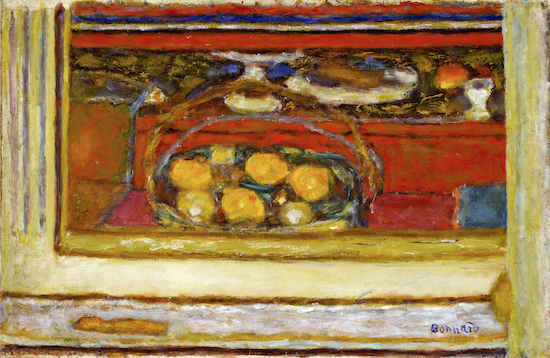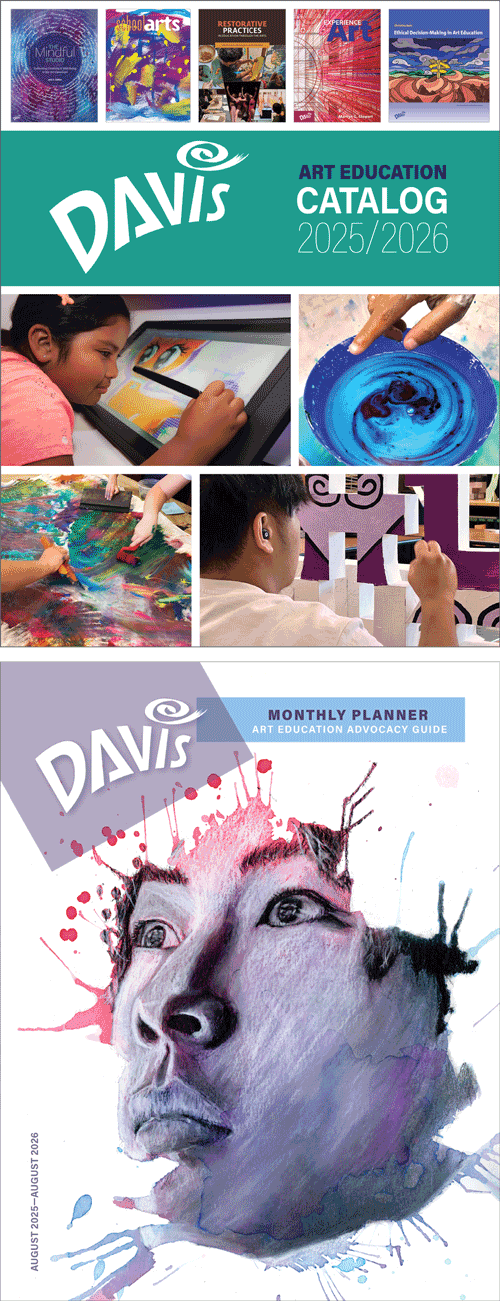Artist Birthday: Pierre Bonnard
Surely one of the greatest colorists in French painting right up there with Henri Matisse (1869-1954), Pierre Bonnard’s intimate, highly personal vision of his world is expressed with gestural brush work and brilliant pure color derived from Impressionism and Fauvism.
Artist Birthday for 3 October: Pierre Bonnard (1867-1947 France)
 |
| Pierre Bonnard, Basket of Fruit in Front of a Mirror, ca. 1944-1946, oil on canvas, 47.3 x 71.4 cm The Museum of Modern Art, New York, © 2025 Artists Rights Society (ARS), New York (MOMA-P1420boars) |
From the 1930s into the 1940s, Bonnard's paintings assumed the finest vibrancy of color of his body of work. He worked in a small bedroom on the French Riviera where his canvases became suffused with radiant Mediterranean light and dazzling color. Still life subjects were close at hand, although he rarely painted from life. He made pencil sketches in a notebook, relying on those and his memory once in the studio. Basket of Fruit Reflected in a Mirror is a picture within a picture, creating ambiguous space in the composition. His late, brilliantly colored still life works represent mundane (every day) subjects rendered in a highly personal, new visual language.
Background
Like most major art movements grounded in strict theories, Impressionism ran its course as a ground-breaking art movement between the 1870s and the 1880s. By that time, some artists rejected the limited theory of Impressionism which neglected psychological depth and emotional involvement in the work of art. The variety of styles -- Symbolism, Pointillism, and Nabis -- that resulted are grouped under the umbrella term Post-Impressionism. Light and color were still major concerns of the Post-Impressionists, but they rejected the momentary, detached mood of Impressionism which emphasized the technical (and optical) aspect of the work of art rather than the subject.
Post-Impressionism was transitional to the highly subjective strains of avant-garde art of the 1900s. The Post-Impressionists reinvested the subject matter with importance, by using it as the focal point of studies in what the very nature of subject and composition should be. Paul Gauguin's (1848-1903) painting was highly influential on several groups of artists, including those now known as Symbolists. Symbolism was an avant-garde movement of artists who rejected the naturalist and materialist emphasis in Western art, preferring subjects that expressed emotions or personal ideals. Gauguin’s work freed color from imitating observed nature (like the Impressionists) and distorted form for purely visually expressive purposes. Some Symbolists combined Impressionist color with symbolic subject matter.
Pierre Bonnard was born in Fontenay-aux-Roses. He studied law in Paris (1885-1888) and briefly practiced law in a government office, at the same time he was taking painting classes at the School of Fine Arts, and then the Academy Julian in 1889. There he met future fellow Nabi artists Maurice Denis (1870-1943), Paul Sérusier (1864-1927) and his lifelong friend Édouard Vuillard (1868-1940). By 1890 he quit law to be a painter.
Bonnard joined the group of painters who dubbed themselves Les Nabis (“the prophets” [of a new style of art]). The Nabis abandoned three-dimensional modeling in favor of flat areas of color, preferring more subjective compositions than the adherence to visual fact of Impressionism, although they maintained the brilliant palette of that movement. Japanese art influenced the Nabis, as well as the painters of the Pont-Aven art colony who, under Paul Gauguin (1848-1903) divorced the color of forms from visual reality.
In 1891 Bonnard began showing in the annual Salon of Independents (artists) in Paris, and designing lithographs for La Revue Blanche magazine. Around 1900 he was painting landscapes in the style of Impressionism and Gauguin. In 1910 he left Paris for southern France where he painted on and off until he moved there permanently. His work gradually evolved from a subdued Impressionist palette to the full luminosity of high key colors and fragmentation of brush strokes that probably reflect the influence of Pointillism and Fauvism. He preferred scenes of domestic interiors and gardens which were both narrative and self-referential. In 1926 he moved to the French Riviera near Cannes, where his palette reached its zenith of bright color.

Comments